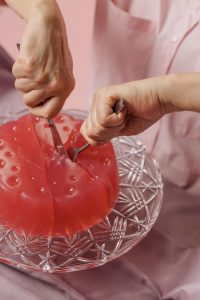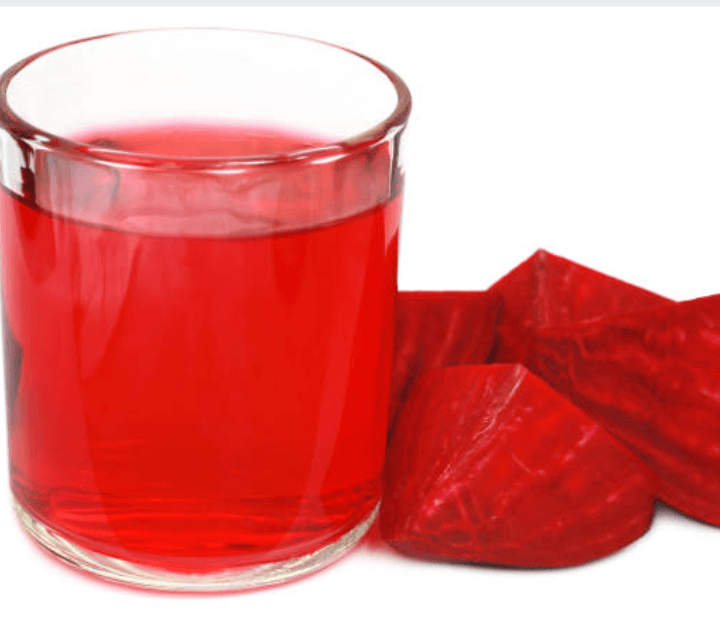If you’re a new parent, you may be wondering if it’s safe to give your baby Jello. The answer is not a straightforward yes or no. In this article, we’ll explore the safety and nutritional value of Jello for babies, provide some healthy alternatives, and share personal anecdotes from parents who have given Jello to their babies.
Can Babies Have Jello?
Learn about the safety and nutritional aspects of feeding Jello to babies, as well as alternatives and tips for making it healthier.
- Jello can pose potential risks to babies, such as choking hazards and high sugar content
- Jello can be introduced to a baby’s diet when they are ready for solid foods, but it should be given in moderation and with caution.
- Safe and healthy alternatives to Jello for babies include mashed fruits, pureed vegetables, and yogurt.
What is Jello and Why Do Parents Wonder if it’s Safe for Their Babies?
Jello is a gelatin dessert that is made by mixing gelatin powder with water, sugar, and other flavorings. Parents may be concerned about whether it is safe for their babies to eat due to the choking hazard that Jello can pose and the high sugar content.
Can Babies Have Jello?
While Jello itself is not necessarily harmful to babies, there are some potential risks to consider. The gelatinous texture of Jello can make it difficult for babies to swallow, which can be dangerous. Additionally, Jello is often high in sugar, which is not ideal for babies.

I gave my six-month-old a small spoonful of Jello, and he immediately started choking. It was a scary experience, and I would never give him Jello again.
However, if you decide to give your baby Jello, you can take precautions to reduce the risk of choking. Cut the Jello into small pieces or wait until your baby is a little older and has developed better swallowing skills.
Read more: >> Can a grey baby tooth turn white again
Nutritional Aspects of Jello for Babies
Jello is not the most nutritious food for babies as it is high in sugar and low in protein and other important nutrients. According to Healthline, a 3.5-ounce (100-gram) serving of Jello contains 80 calories, 19 grams of sugar, and 0.8 grams of protein.
Personal anecdotes: “I gave my baby Jello as a fun treat, but I realized it was just empty calories. I switched to giving him mashed fruits and pureed vegetables, which are much healthier”.
When Can Babies Have Jello
Jello is a popular dessert that many people enjoy. But when can babies have jello?
According to Infant Empire, babies can have jello starting at the age they can chew solid food, which is typically around 6 months old. However, it’s important to offer jello in moderation and as part of a balanced diet that includes plenty of fruits, vegetables, and other nutrient-rich foods.
Jello is not a necessary part of a baby’s diet. Parents should prioritize feeding their babies a healthy diet of fruits, vegetables, grains, and protein.
Additionally, consider any potential hazards associated with eating jello. As The First Time Mamma notes, jello contains sugar that doesn’t contribute to the growth of a baby. Too much intake can cause tummy disruption and constipation in some babies.
Alternatives to Jello for Babies
[wptb id=331]
Mashed fruits and pureed vegetables are both great choices for babies as they are packed with nutrients and are easy to swallow. Yogurt is another good choice as it is high in protein and calcium. When choosing alternatives to Jello, it’s important to consider the nutritional value of the food and make sure that it is appropriate for your baby’s age and developmental stage.
My baby loves yogurt, so I started making yogurt Jello using unflavored gelatin and plain yogurt. He enjoys it just as much as regular Jello, and I feel better about giving it to him.
Read more: >> Can babies eat cream of wheat
How to Make Jello Healthier for Babies
If you decide to give your baby Jello, there are some things you can do to make it healthier. For example, you can use real fruit juice instead of flavored gelatin mixes to reduce the amount of sugar in the recipe. You can also reduce the amount of sugar in the recipe or experiment with using natural sweeteners like honey or maple syrup.
Here are a few healthy Jello recipes for babies:
Fresh Fruit Jello: Mix unflavored gelatin with pureed fresh fruit and a touch of honey or maple syrup. Chill until set.
Yogurt Jello: Mix unflavored gelatin with plain yogurt and a touch of honey or maple syrup. Chill until set.
Coconut Jello: Mix unflavored gelatin with coconut milk and a touch of honey or maple syrup. Chill until set.
Homemade Jello for Babies
Homemade jello is a great option for parents who want to give their babies a treat without compromising on nutrition. It is easy to make and can be customized to suit your baby’s taste preferences. Here are some tips on making homemade jello for babies:
Ingredients
To make homemade jello for babies, you will need the following ingredients:
- 1 cup of fruit juice (preferably freshly squeezed)
- 1 tablespoon of gelatin powder
- Water (optional)
Instructions
- Pour the fruit juice into a small saucepan and heat it over medium heat until it comes to a boil.
- Remove the saucepan from the heat and sprinkle the gelatin powder over the juice. Stir until the powder is completely dissolved.
- If the mixture is too thick, you can add some water to thin it out.
- Pour the mixture into a silicone mold or a shallow dish and refrigerate for at least 2 hours, or until the jello is set.
- Once the jello is set, you can cut it into small pieces and serve it to your baby.
Tips
- Use freshly squeezed fruit juice to ensure that the jello is free from preservatives and additives.
- You can use any type of fruit juice to make homemade jello, but it is best to avoid citrus juices as they can be too acidic for babies.
- If your baby is under 12 months old, it is best to avoid honey as it can cause botulism in infants. Instead, you can sweeten the jello with a small amount of pureed fruit or maple syrup.
- You can also add pureed fruits or vegetables to the jello mixture for added nutrition and flavor.
Read more: >> 11 things unborn babies can do in the womb
Is Jello a Choking Hazard for Toddlers
When it comes to feeding babies and toddlers, parents must always consider the risk of choking. According to the CDC, choking is a leading cause of injury and death among children under the age of 4. Therefore, it is important to know whether jello is a choking hazard for toddlers.
While jello is not a common choking hazard for babies and toddlers, parents should still take precautions to prevent choking. Babies and toddlers are still learning how to eat and may not be able to chew or swallow certain foods properly. Therefore, parents should always supervise their children while they eat and make sure to cut jello into small pieces before serving.
Allergic Reactions to Jello
While rare, some babies may have an allergic reaction to Jello. Signs of an allergic reaction include hives, swelling of the face or tongue, difficulty breathing, and vomiting. If you think your baby may be having an allergic reaction, seek medical attention right away.
My baby had hives all over his body after eating Jello. I took him to the doctor, and he was diagnosed with a gelatin allergy. We avoid all gelatin-containing foods now.
Frequently Asked Questions
[sp_easyaccordion id=”399″]
Conclusion
Can babies have Jello? The answer is yes, but with caution. Jello can be a safe and enjoyable treat for babies when given in moderation and with precautions to reduce the risk of choking. However, there are healthier alternatives available that are packed with nutrients and are easier for babies to digest. As always, it’s important to consult with your pediatrician before introducing new foods to your baby’s diet.
Insider Tip: When introducing new foods to your baby, it’s best to do so one at a time and wait a few days in between to watch for any signs of an allergic reaction. Can babies have jello?, the is yes.
